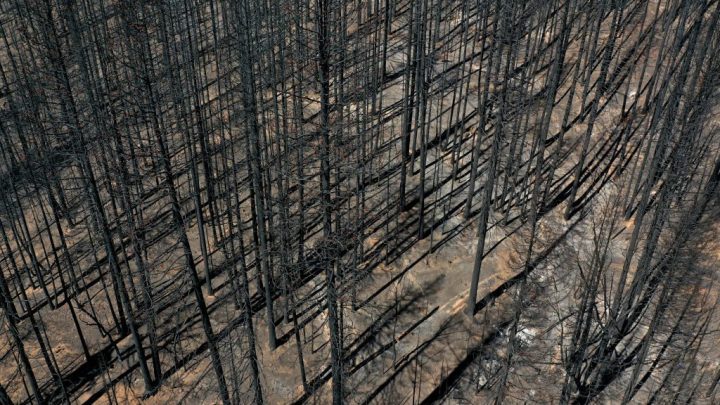
Logging could make California forests more resilient, but supply chain woes abound
Logging could make California forests more resilient, but supply chain woes abound

As counterintuitive as it might seem, logging could be one way to help make California’s woodlands more wildfire resilient. Unfortunately, the process is beset with its own unique set of supply chain problems.
Freelance journalist Jane Braxton Little wrote about this dilemma for Bay Nature. According to Braxton Little’s reporting, the process is called selective logging, and it involves landowners working with foresters to identify individual fire-risk trees, which are then harvested for lumber. While there’s evidence that this practice could help mitigate future wildfires, there’s a critical problem: No one is able to buy the logs.
This ultimately comes down to California’s overburdened sawmills, which are at capacity and often unable to take on new lumber, Braxton Little said in an interview with “Marketplace” host Amy Scott.
“The diminished capacity of the industry in recent years, that means that they can’t always handle the supply,” said Braxton Little. “So it’s kind of like a narrow neck funnel that slows down the flow of timber logs from private, non industrial forest owners to the sawmills.”
To hear Braxton Little and Scott’s conversation, click the audio player above.
There’s a lot happening in the world. Through it all, Marketplace is here for you.
You rely on Marketplace to break down the world’s events and tell you how it affects you in a fact-based, approachable way. We rely on your financial support to keep making that possible.
Your donation today powers the independent journalism that you rely on. For just $5/month, you can help sustain Marketplace so we can keep reporting on the things that matter to you.











